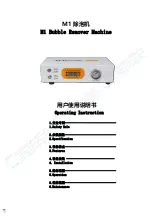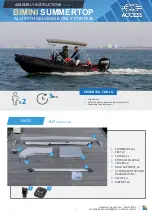
24
B.5.2
ZAWÓR
NADCIŚNIENIOWY
Zawory nadciśnieniowe (overcenter) są
zamontowane na siłownikach 1-go i 2-
go wysięgnika.
Ich zadaniem jest zablokowanie lub
powolne opuszczanie ładunku, jeżeli
ciśnienie w tych siłownikach osiągnie
wartość nastawioną w tych zaworach.
Dzięki temu żuraw jest bezpieczny.
ZAWÓR
NADCIŚNIENIOWY
NA
SIŁOWNIKU 1-WYSIĘGNIKA
Zawór w tym przypadku służy jako
urządzenie ograniczania udźiwgu:
Z żurawiami nie EC, kiedy siłownik 2-
wysięgnika lub siłowniki wysuwu zostały
ruszone, i kiedy ciśnienie w 1-
wysięgniku osiągnie wartośc max,
zawór
pozwoli
opaść
powoli
1
wysięgnikowi.
Aktywizacja
zaworu
pokazuje
operatorowi,
że
żuraw
osiągnął
maksymalne obciążenie udźwigu.
ZAWÓR
NADCIŚNIENIOWY
NA
SIŁOWNIKU 2-WYSIĘGNIKA
Zawór ten działa tylko w przypadku
wadliwego działania innych zaworów
bezpieczeństwa dla ochrony budowy
żurawia.
B.5.2 OVERPRESSURE
VALVES
The overpressure valves (overcenter)
are fitted on the 1.boom cylinder and on
2. boom cylinder.
Their purpose is to block or lower the
load if the pressure into the cylinders
reaches the setting value.
So the crane is made safe.
OVERPRESSURE VALVE ON THE
1.BOOM CYLINDER
This valve operates as load limiting
device in this case:
On the not EC cranes, when the 2.boom
cylinder or the extensions cylinders are
moved and when the pressure into the
1.boom cylinder reaches the max
setting value, the valve lets down slowly
the 1.boom.
The activation of the valve indicates to
the operator that the crane reached its
max lifting capacity.
OVERPRESSURE VALVE ON THE
2.BOOM CYLINDER
This valve operates only in case of
malfunction of other safety valves for
protecting the structure of the crane.
B.5.2
ÜBERDRUCKVENTILE
Die Überdruckventile (overcenter) sind
auf dem 1.Auslegerzylinder und dem
2.Auslegerzylinder.
Zweck der
Überdruckventile ist die Last
zu blockieren oder abzusenken, wenn
der Druck in den Zylindern den
Eichungswert erreicht. So ist der Kran
sicher.
ÜBERDRUCKVENTIL AUF DEM
1.AUSLEGERZYLINDER
Dieses Ventil funktioniert als Last-
begrenzer in diesem Fall:
Auf Kränen nicht EG, wenn der
2.Auslegerzylinder oder die Schub-
zylindere gesteuert sind und wenn der
Druck im 1.Auslegerzylinder den max.
Eichenwert erreicht, läßt das Ventil den
1.Ausleger langsam senken.
Die Betätigung dieses Ventils zeigt dem
Kranbediener, dass der Kran die max.
Hubkraft erreicht hat.
ÜBERDRUCKVENTIL AUF DEM
2.AUSLEGERZYLINDER
Dieses Ventil tritt in Tätigkeit nur im Fall
von Störung der anderen Sicherheits-
ventile,
um
die
Kranstruktur
zu
schützen.















































